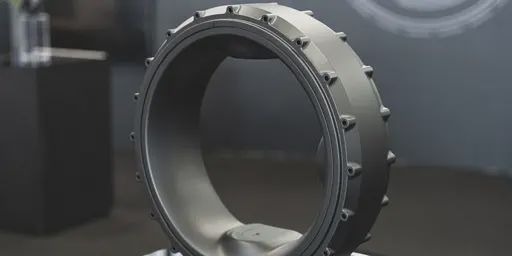Donut Lab's New Motor Brings Power to the Wheel Hub
(spectrum.ieee.org)
from flango@lemmy.eco.br to technology@lemmy.world on 18 Jan 2025 19:08
https://lemmy.eco.br/post/10278076
from flango@lemmy.eco.br to technology@lemmy.world on 18 Jan 2025 19:08
https://lemmy.eco.br/post/10278076
The Finland-based company’s in-wheel motor serves up 650 kilowatts of power

threaded - newest
Can anyone explain the benefit? I would’ve thought putting the motor in the wheel would subject it to way more wear and tear from being only a tire wall’s support away from every pothole and bump in the road. Mounting a motor on the vehicle frame and using a driveshaft offers much more protection.
The benefit is driveline efficiency- by eliminating all gears/CV joints/axles and only having one or two bearing races rotating, you reduce driveline friction losses and “wasted” rotational inertia to effectively null. With electric vehicles every single watt per mile matters, even shaving 0.1% off helps bunches. It also reduces part count, and thus cost too.
Per wheel motor drives also allows significantly more advanced torque vector traction control.
The downside is just what you say, mechanical isolation- the motor is now in a dirtier, harsher environment, the power cables must now flex continuously with the suspension and will be a very high risk failure point, and the outboard wheel now has a significantly higher unsprung mass meaning the suspension will need to be beefier and be less effective at dampening road vibrations to the rest of the vehicle.
Eliminating the entire drivetrain is the benefit. That’s a ton of complicated heavy wear parts you immediately don’t have to worry about. Even if you take more wear on the motor, fixing that would be as simple as just swapping out a wheel.
I mean you effectively just eliminated 75-90% of the car
On the other hand every time you need to replace a wheel (one of the most easily damaged parts of your car) you’re probably shelling out a quarter of a car in cost.
On the other, other hand, the cost of manufacturing the car just went down by ~60% (cost of parts) assuming they can make these somewhat conparable to the price of a tire. If they can match the price of a tire it went down by a shitload more
I don’t think there’s any practical way for that to happen and I expect you’d want to put tires over top of these anyway. Which will themselves be very expensive because they won’t be able to mount regular tires on them.
I’m sure they can design it in a way to work with existing tires. But I’m also sure there’s zero chance replacing these wheels will be anywhere near cheap.
That’s assuming you can’t just move the motor to a new wheel.
.
Yes, it’s a stupid idea, and there’s a reason why almost nobody does this. Mostly because of the handling, the more unsprung mass you have, the harder it is to keep the wheels on the ground.
This invention surfaces every five years or so. Obviously never goes anywhere. I bet the creators are well aware of this and they just want to bait a dumb enough VC to exit with a load of cash.
Not just that, I doubt the motor would be particularly happy with all the vibrations happening to it.
Definitely not. There’s a few aftermarket conversions that use hub motors, but the ones I’ve seen were on vehicles like Land Rovers with live axles.
Yay, more unsprung weight! 🙄
Meanwhile in South Korea…
youtu.be/Nd6C0y8xc20
Isn’t that exactly the same idea though? The motor is now on the chassis, but the reduction gear is still a lot of weight.
Race cars have gone as far as having inboard brakes to reduce unsprung mass, moving the gearing out to the wheel is silly.
But is it 88 pounds of weight like that donut motor? Because a traditional CV axle certainly isn’t 88 pounds.
The uniwheel sort of did too, given regenerative braking.
That looks super fragile and breakdown prone.
The most important job of a suspension system is to keep the wheels in steady contact with the ground, comfort is a secondary concern. With this in mind, manufacturers go to great lengths to reduce unsprung mass, even as far as having inboard brakes on race cars.
And you want to put the motor out on the wheel?
15kw per kg is a huge improvement. Even their 2kw/kg small motor would be great for a way overpowered bicycle.